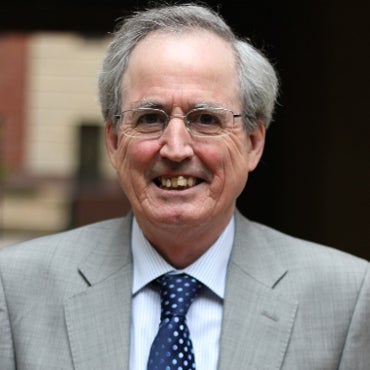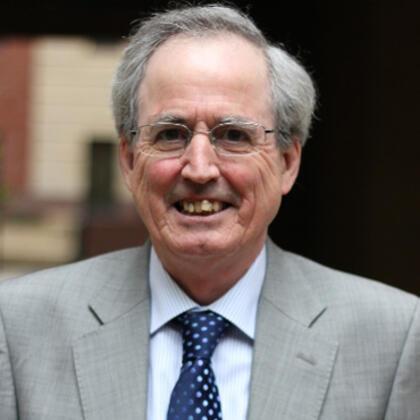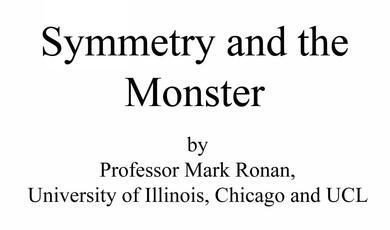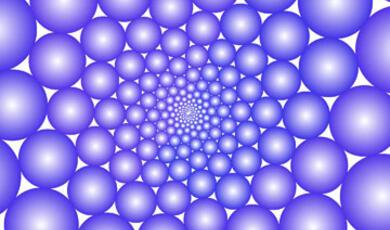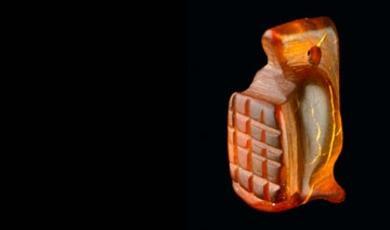31 October 2012
James Clerk Maxwell
Professor Raymond Flood
James Clerk Maxwell was one of the most important mathematical physicists of all time, coming only after Newton and Einstein. Within a relatively short lifetime he made enormous contributions to science. Foremost among these was the formulation of the theory of electromagnetism with light, electricity and magnetism all shown to be manifestations of the electromagnetic field. He also made major contributions to the theory of colour vision and optics, the kinetic theory of gases and thermodynamics, and the understanding of the dynamics and stability of Saturn's rings.
His work on electricity and magnetism was such that Einstein enthused:
“Since Maxwell’s time, physical reality has been thought of as represented by continuous fields, and not capable of any mechanical interpretation. This change in the conception of reality is the most profound and the most fruitful that physics has experienced since the time of Newton”
While the distinguished physicist Richard Feynman predicted:
“From a long view of the history of mankind — seen from, say, ten thousand years from now — there can be little doubt that the most significant event of the 19th century will be judged as Maxwell’s discovery of the laws of electrodynamics.”
I will start by giving an overview of his life and then will consider his major areas of interest and his achievements.
He was born on 13th June 1831 in Edinburgh and moved in 1833 to Glenlair, an estate that his father had inherited and which is about 90 miles southwest of Edinburgh.
He came from a financially well off and well established family. His father John had trained as a lawyer but seems to have been more interested in what we might now call “design and technology”. His mother, Frances, was 40 when James was born in 1831 and died in December 1839 of stomach cancer. James, like his mother, was to die also of stomach cancer. From all accounts James was a much loved, precocious, curious and intelligent child. After his mother’s death James’ father, John, appointed a tutor for him which was not a success, to put it mildly, and as a result James was sent to Edinburgh Academy and to live with relatives.
This was just under two years after his mother’s death. P.G. Tait was another pupil at the Academy and they became lifelong friends even though as adults they competed for the same job on more than one occasion.
It was while he was at Edinburgh Academy that he published his first academic paper at the age of 14. It arose out of his attempts to generalise the well-known process of how to draw an ellipse.
If you have two pins in a board and a string attached to them and you then push a pencil against the string to make the string taut and move the pencil you will obtain an ellipse. James investigated what happens when the string is folded back on itself towards each pin. Here from his collected works is the opening page of the paper in the Proceedings of the Royal Society of Edinburgh.
The title was “On the description of Oval Curves and those having a plurality of foci; with remarks by Professor Forbes”.
In the bottom left picture the string starts at the left pin, goes round the pencil and then round the right pin back to the pencil where it is attached. So the length of the string is the sum of the distance to the left pin plus twice the distance to the right.
In the bottom right picture the string starts attached to the pencil, goes round the right pin, back to the pencil, then round the left pin, back to the pencil and is then attached to the right pin. So the length of the string is the sum of twice the distance to the left pin plus three times the distance to the right. The slide shows some of the ovals that can be generated.
And of course why stop with just two pins!
Although Descartes had described ways of generating these curves, Maxwell’s method was new. Maxwell’s father, John, showed the work to a friend J.D. Forbes who was Professor of Natural Philosophy at Edinburgh University and who arranged for its publication. The reason I mention it now is that apart from showing his talent at such an early age, of 14, it shows two of his lifelong characteristics – the ability to generalise and his ability in and enthusiasm for geometrical reasoning.
In 1847 James enrolled at Edinburgh University, where he would study mathematics under Philip Kelland, Natural Philosophy under James Forbes and Logic under Sir William Hamilton.
He was 16 and was undecided on his future career and whether he should follow his father’s wishes and become a lawyer. When he left Edinburgh University three years later he was decided on a scientific career or as he put it, I think most charmingly, to pursue “another kind of laws”.
I want to pick out one investigation that he undertook at Edinburgh University because it illustrates how he was a gifted experimentalist as well as a theoretician – he was like Newton in this regard. This excellent work was on the “Equilibrium of Elastic Solids” and was published in 1850 and it will also come back into our story when I talk about electromagnetism.
In it he axiomatised the equations of elasticity and applied the results to a number of problems. He wrote:
And
This was a professional piece of work on a topic of current interest to many.
He went up to Cambridge in 1850 to Peterhouse College for his first term and then migrated to Trinity College, possibly because there might be better career opportunities at Trinity. He graduated as second Wrangler, with E.J. Routh taking the top spot of Senior Wrangler, i.e. obtaining the top first class honours. In the subsequent competition for the Smith’s prize Maxwell and Routh were declared joint winners.
In their Smith’s examination paper of 1854 Stokes Theorem, connecting surface and line integrals was question 8. Maxwell later made great use of this theorem in his work on electromagnetism.
Maxwell had done well, not as well perhaps as Tait who two years earlier had been Senior Wrangler and Smiths prizeman but then Tait was not up against Routh. All of them had studied under the great private tutor William Hopkins as had Stokes, Cayley and William Thomson.
In 1855 he became a fellow of Trinity. This year also saw him publish the paper, “Experiments on Colour as perceived by the Eye”, as well as the first part of his paper on Faraday’s Lines of Force which showed the first evidence of true genius. The second part was published the following year.
In 1856 Maxwell received a letter from Forbes telling him that the chair of Natural Philosophy at Marischal College, Aberdeen was vacant and suggesting that he apply. He was young, 24, for a professorship and relatively inexperienced but others had been appointed at similar ages: William Thomson to his chair at Glasgow at age 22 and P.G. Tait to his professorship of Mathematics at Queen’s College, Belfast at age 23. Opportunities did not come up very often and Aberdeen would also allow him to be closer to his father. However his father died around Easter 1856 before Maxwell heard that he had been appointed to Marischal College, one of the two University level colleges in Aberdeen at that time.
The University year ran from November until April when the students went home to help with their parents’ farms, trades or professions, so Maxwell was able to spend half the academic year at Aberdeen and the rest at his estate, Glenlair. In 1858 he married Katherine Mary Dewar, daughter of the Principal of Marischal College.
Katherine helped him in his scientific experiments both in Aberdeen on his colour experiments and later in London on Kinetic Theory, in particular on the viscosity of air.
The same year that he was married he was awarded the Adams’ Prize of Cambridge University for his work on the stability of the Rings of Saturn. He had also been thinking about the structure of gases and an 1860 paper introduced statistical methods into physics.
When in 1860, Aberdeen merged its two colleges into one university Maxwell lost out to the other Professor of Natural Philosophy – David Thomson. Maxwell had already applied for the Edinburgh chair of Natural Philosophy which Forbes had left to be Principal of St Andrews. He was up against Tait and Routh and this time it was Tait that succeeded – Maxwell had beaten Tait to the Marischal College post. Maxwell then applied for the vacant chair at King’s College, London and was successful. For the next six very productive and fruitful years, the Maxwells now divided their time between London and Glenlair.
The picture is of Maxwell in the early 1860s, soon after he became Professor of Physics and Astronomy at Kings College London at age 29.
In his inaugural lecture he said:
“In this class I hope you will learn not merely results, or formulae applicable to cases that may possibly occur in our practice afterwards, but the principles on which those formulae depend, and without which the formulae are mere mental rubbish. I know the tendency of the human mind is to do anything rather than think. But mental labour is not thought, and those who have with labour acquired the habit of application, often find it much easier to get up a formula than to master a principle”
And he continued with what turned out to be an amazingly prophetic statement:
“last of all we have the Electric and Magnetic sciences, which treat of certain phenomena of attraction, heat, light and chemical action, depending on conditions of matter, of which we have as yet only a partial and provisional knowledge. An immense mass of facts have been collected and these have been reduced to order, and expressed as the results of a number of experimental laws, but the form under which these laws are ultimately to appear, as deduced from central principles, is as yet uncertain. The present generation has no right to complain of the great discoveries already made, as if they left no room for further enterprise. They have only given science a wider boundary, and we have not only to reduce the regions already conquered but to keep up constant operations on a continually increasing scale.”
The most important achievement of Maxwell’s London years was contained ina series of articles on electromagnetic theory and in which the celebrated Maxwell’s equations first appeared. In January 1865 Maxwell resigned, mainly it appears to return to Glenlair to occupy his time with experiments and speculations of a physical kind which as he said;
“I could not undertake as long as I had public duties.”
The picture is of Glenlair taken about 1884. The time he spent at Glenlair was not a time of retirement. As well as preparing his great Treatise on Electricity and Magnetism he published a book on the theory of Heat in which he introduced Maxwell’s demon as well as developing his ideas on the theory of gases.
He also continued to be involved with the British Association for the Advancement of Science. Then in 1871 he was asked to go back to Cambridge to set up and direct the proposed Cavendish Laboratory of Experimental Physics.
The picture is of Maxwell in his late forties. Maxwell was not the first to be approached to direct the new laboratory. Thomson had been approached first and then Helmholtz.
Maxwell’s emphasis for the Laboratory was to achieve measurements of high precision, sometimes to several orders of magnitude better than any previous attempts.
In 1877 Maxwell’s health started to fail and over the following two years there were periods when he was in too much pain for work.
He died of stomach cancer in November 1879 and was buried in Parton cemetery, near Castle Douglas in Galloway.
His mother, then father then eventually Maxwell followed by his wife – a simple tomb worth contrasting with that of Newtons.
The distinguished Charles Coulson, a 20th century successor to Maxwell at King’s College, London commented on Maxwell:
“There is scarcely a single topic that he touched upon that he did not change almost beyond recognition”
Maxwell tended to jump between areas of investigation so I want to collect and discuss his work in the areas of:
Saturn’s rings
Colour vision
Kinetic Theory
Electromagnetism
It was Maxwell’s investigation of the dynamics and stability of Saturn’s ring that first gave Maxwell a national reputation and recognition by for example Stokes and Thomson.
The questions of the rings stability was the subject of the 1855 Adams prize, named after James Couch Adams, who with Leverrier was given credit for the discovery of Neptune.
Note, one of the setters was Thomson, and here, a little larger, is more of the detail.
Entries for the prize had to be submitted by December 1857. The problem was difficult and even the great Laplace , author of the standard work on Celestial mechanics, had only obtained partial results in the case where the ring was assumed solid. Laplace had shown that a uniform solid ring would be unstable but conjectured that a solid ring could be stable if its mass was unevenly distributed.
Maxwell first showed that Laplace’s intuition was correct and that a solid ring could not be stable except in a strange configuration where about 80% of the mass was at one point on the ring and the rest uniformly distributed.
By observation of Saturn this was ruled out.
The next situation was to look at fluid rings and their stability. This was to depend crucially on how internal wave motions behaved and Maxwell showed that these waves would cause a fluid ring to break up into separate blobs, so would need to consist of separate parts. Next to consider was the stability of a ring of different separate parts. The situation of a ring with a large number of objects of different sizes and masses was too difficult and Maxwell simplified by considering a single ring with identical, equally-spaced particles. He showed that such a system would show four modes of vibration but as long as the average density was small enough it would be stable.
When he considered two concentric rings he found that stability imposed conditions on the ratio of their radii.
The analytic techniques he used in his essay owed a great deal to his mathematical studies at Cambridge in the same way, I would suggest, that his work on colour owed a great deal to his experimental training at Edinburgh.
When at Edinburgh both Maxwell and Forbes were interested in colour vision. It had been suggested by Thomas Young, in 1800, that there were three sets of colour receptors in the eye. Forbes and Maxwell identified three primary colours as red, green and blue. They used a wood disk to which three coloured disks could be attached so that different amounts of each colour could be displayed. When the wood disk was spun these primary colours were in some sense mixed and the brain perceives a single colour. Persistence of vision which Maxwell was earlier interested in seems to be fundamental here. The central area of the wooden disk could contain another colour and the experiment was to find the proportions of the primary colours that, on spinning the disc, gave the colour in the centre. The important point is that he quantified the effect of combining his three primary colours of red, green and blue. He represented this geometrically as a colour triangle.
The three primary colours red, green and blue are represented by the vertices of the triangle. Each point inside the triangle represents the result in some proportion of red, blue and green.
Maxwell was invited to give a lecture in 1861 to the Royal Institution on colour vision. He wanted to illustrate his lecture and demonstrate that any colour could be made by mixing the three primaries of red, green and blue.
But the spinning colour disc we have seen was too small to be seen by the audience. A subsequent invention, the colour box, could only be used by one person at a time.
However there was photography! Perhaps he could use photography to show the phenomenon to such a large audience.
The basic techniques of black and white photography were known and it was possible to project a photograph on a screen for an audience to see. He wanted to see if he could make a colour photograph and project it on a screen for the audience in the same way and that would illustrate that any colour could be made by mixing the three primaries of red, green and blue.
He would need to take three photographs of the same object through red, green and blue filters in turn and then project them simultaneously on the screen through the same three filters. On screen you see the result.
It worked but it shouldn’t have!
The result could not be duplicated, and the problem was that the then available photographic plates were sensitive to light at the blue end of the spectrum but not very much to light at the red end. Maxwell had been lucky because of a sensitivity of the emulsion to the ultra-violet. Instead of photographing the ribbon under red light Maxwell was actually hotographing it under ultraviolet light so the mixture of colours which Maxwell obtained was ultraviolet, blue and blue-green, not the mixture red, blue, green he believed he had obtained.
Maxwell had been lucky. This was the first colour photograph.
Now I want to turn to an area of investigation that shows both his mathematical and experimental abilities. This is the Kinetic Theory of gases.
In April 1859 Maxwell read a paper by Rudolf Clausius about the speed of diffusion in gases. In the kinetic theory of gases it is proposed that gases consist of a great number of molecules whizzing around and, for example, their impact with a surface causes pressure and what we experience as heat is the kinetic energy of their motion. By the mid nineteenth century Kinetic Theory could explain most of the experimentally-obtained laws connecting pressure, volume and temperature. But for the theory to explain, for example, pressure, the molecules would have to travel very fast – hundreds of metres a second.
But then why do smells travel relatively slowly?
If I take the stopper out of this bottle of perfume the fragrance will travel relatively slowly throughout the room. Clausius had suggested that each molecule undergoes an enormous number of collisions and so is continually changing direction.
As Maxwell put it in a letter to P.G. Tait:
“If you go at 17 miles per minute and take a totally new course 1,700,000,000 times a second, where will you be in an hour?”
Clausius had assumed that all molecules at a given temperature had the same speed. Maxwell when analysing Saturn’s rings had similarly simplified by assuming identically spaced particles.
But his inspiration now was to capture the motion of many particles in a single probabilistic law. It said nothing about an individual molecule but gave the proportion of molecules which had velocities within a given range.
It is brilliant how quickly he derives this distribution.
It comes out in a few lines and you see it on the screen. The argument is:
In a gas at constant temperature and pressure, i.e. at equilibrium, and composed of molecules of the same type, let the components of the velocity of each molecule be x, y, and z, along three arbitrarily selected mutually perpendicular axes. The speed then of any particular molecule will be the square root of x squared plus y squared plus y squared.
He then assumes:
First that the number of molecules with velocity x is independent of the number with velocity y and independent of the number with velocity z, next that their distributions are of the same form – essentially factorizing the joint density function. And finally that this is a function of the speed only. As a result he obtains the functional equation shown.
It is relatively straightforward then to show that the distribution of velocities in any direction is given by a normal distribution.
This was the first ever statistical law in physics – the Maxwell distribution of molecular velocities.
It was the now familiar normal shaped distribution, a bell shaped curve. The proportion of velocities between any two velocities v and w is just the area under the curve between v and w. The average velocity is zero which can be seen since the curve is symmetric about zero. As the temperature of the gas increases the curvel becomes flatter and wider.
It is relatively simple to derive the distribution of the molecular speeds from knowledge of the distribution of the molecular velocities and here we see it.
The speed is the magnitude of the velocity and so the average speed will be non-zero. The shape of the distribution of the speeds will also vary with temperature.
Maxwell’s discovery of the distribution of velocities and speeds was a result of the first order. It led to a new approach in physics. Previously statistical methods had been used for analysing errors in observations. Social scientists had used statistical methods to describe populations. What Maxwell had done was to use statistical methods to describe physical processes.
This entirely new approach led to statistical mechanics, an enhanced understanding of thermodynamics and the use of probability in quantum mechanics.
It also helped to confirm that gases consisted of fast moving molecules. This is because Maxwell used the Kinetic Theory to predict a new law.
The new law was that viscosity is independent of pressure. The viscosity of a gas is the drag it produces on a body pulled through it or the damping it causes on a pendulum swinging in it.
This result that viscosity is independent of pressure is surprising since you might expect a gas at higher pressure to offer more resistance to a body moving through it. However if the body is surrounded by more molecules they collide into each other more frequently – have a shorter mean free path – and screen the moving body. The screening effect balances the increase in pressure.
Maxwell’s work was to provide an inspiration for Ludwig Boltzmann who spent most of his career developing the subject of statistical mechanics and thermodynamics and putting it on a sound basis.
It is very appropriate that their names are now joined in the Maxwell-Boltzmann distribution of molecular energies.
The last topic is the one that is most closely associated with his name:
Electromagnetism
Maxwell began his researches on electricity and magnetism shortly after graduating in 1854 and continued with them until shortly before his death refereeing a paper of G.F. Fitzgerald on the subject. It is a complicated story and I will just be able to pick out some key features.
Oersted’s discovery of electromagnetism in 1820 was very important because what he observed differed from previous phenomenon it two ways. First of all it was caused by electricity in motion and secondly the magnet was not attracted or repelled but was caused to move at right angles to the wire carrying the current. Michael Faraday viewed this result as crucial in his thinking about electromagnetism and his development of ideas about lines of magnetic and electric force.
Faraday was an important influence on Maxwell, as indeed was William Thomson who, for example, developed a formal connection between the equations of electrostatics and the equations for the flow of heat.
Maxwell’s first paper, On Faraday’s Line of Force” was published over 1855 to 1856 in two parts. The first part dealt with an analogy between lines of force and streamlines in an incompressible fluid. In the second part he started the development of a theory of electromagnetism and made extensive use of Stokes’ theorem which we saw earlier when it was set as an exam question.
Maxwell’s next paper “On physical Lines of Force” (1861 – 1862) attempted to devise a medium, filling space that would account for the stresses associated by Faraday with his lines of magnetic force. It concluded with the property that vibrations of this medium have properties identical with light!
Look at this array of hexagonal vortices in an incompressible fluid. Normally the pressure is identical in all directions but if the vortices rotate, centrifugal force would cause it to expand along the middle, in the plane of the paper and contract along the axis of spin, perpendicular to the paper - in the same way that the earth’s rotation causes it to bulge at the equator and flatten at the poles. In the plane of the paper the rotating cells would push against each other creating a pressure and along the spin axis, perpendicular to the paper, they would be trying to contract creating a tension. So the lines along the spin axes would behave just like Faraday’s lines of force, exerting an attraction along their length and a repulsion sideways. By making the angular velocity proportional to the local magnetic intensity, Maxwell obtained the existing connections between magnets and steady currents.
But how can we incorporate electricity into the model? This was done by means of these small spheres between the hexagonal vortices, they are the electrical particles. These spheres also solve another problem which is to stop the vortices rubbing against each when rotating in the same sense – they act as “idle wheels” which engineers put between wheels that need to rotate in the same direction.
The model was to prove very useful as an engine of discovery. For example, when current flows in wire AB it makes the adjacent vortices rotate, which do the same to the next layer of particles and so on until we have an infinite series of rotating vortex rings giving the magnetic lines of force, associated with the current, as seen in Oersted’s discovery.
There is one final important feature of the model that Maxwell introduced. This was to make the vortex medium elastic. Now the forces between electrically charged bodies could be attributed to potential energy stored in the medium by electrical distortion, just as magnetic forces are attributed to stored rotational energy. This allowed him to develop the displacement current, but more spectacularly, the great result was at hand! An elastic substance can transmit waves and Maxwell calculated that their velocity was the ratio of the electromagnetic and electrostatic units of electric charge which turned out to be the speed of light. As he wrote:
“we can scarcely avoid the inference that light consists in the transverse undulations of the same medium which is the cause of electric and magnetic phenomena”
In other words light is propagated as an electromagnetic wave!
Maxwell was unhappy, as were many, with this model of whirling cells and idle wheels and as he wrote:
“The conception of a particle having its motion connected with that of a vortex by perfect rolling contact may appear somewhat awkward. I do not bring it forward as a mode of connexion existing in nature, or even as that which I would willingly assent to as an electrical hypothesis. It is, however, a mode of connexion which is mechanically conceivable, and easily investigated, and it serves to bring out the actual mechanical connexions between the known electro-magnetic phenomena; so that I venture to say that anyone who understands the provisional and temporary character of this hypothesis, will find himself rather helped than hindered by it in his search after the true interpretation of the phenomena”
His fourth paper, “A Dynamical theory of the of the Electromagnetic Field”, published in 1865 resolved this issue as it provided a theoretical framework based on experiment and a few general dynamical principles from which the propagation of electromagnetic waves through space followed, without any recourse to vortices or forces between electric particles. Maxwell wrote about this paper
“I have also a paper afloat, containing an electromagnetic theory of light, which, till I am convinced to the contrary, I hold to be great guns.”
In this paper and in his “Treatise on Electricity and Magnetism“, of 1973 he developed Maxwell’s equations which in a modern notation are:
H is the magnetic field strength – it is the magnetic flux density divided by the permeability of the medium.
j is the current density
t is time
B is the magnetic flux density
E is the electric field strength
Ρ is the volume density of charge.
Maxwell’s equations are immensely practically and theoretically important and let me finish with the Einstein quote from my opening:
“Since Maxwell’s time, physical reality has been thought of as represented by continuous fields, and not capable of any mechanical interpretation. This change in the conception of reality is the most profound and the most fruitful that physics has experienced since the time of Newton.”
I think what Einstein might have meant here was how Maxwell went from a mathematical description of a mechanical model involving vortices separated by rolling spheres to the complete abstraction given in his Treatise on Electricity and Magnetism. He stripped away all the imagery of the model until finally all that remained was the mathematics.
The mathematics was the model!
This transformed physics and made possible the development of relativity and quantum theory, and is, possibly, James Clerk Maxwell’s greatest achievement.
Thank you
© Professor Raymond Flood 2012


 Login
Login
